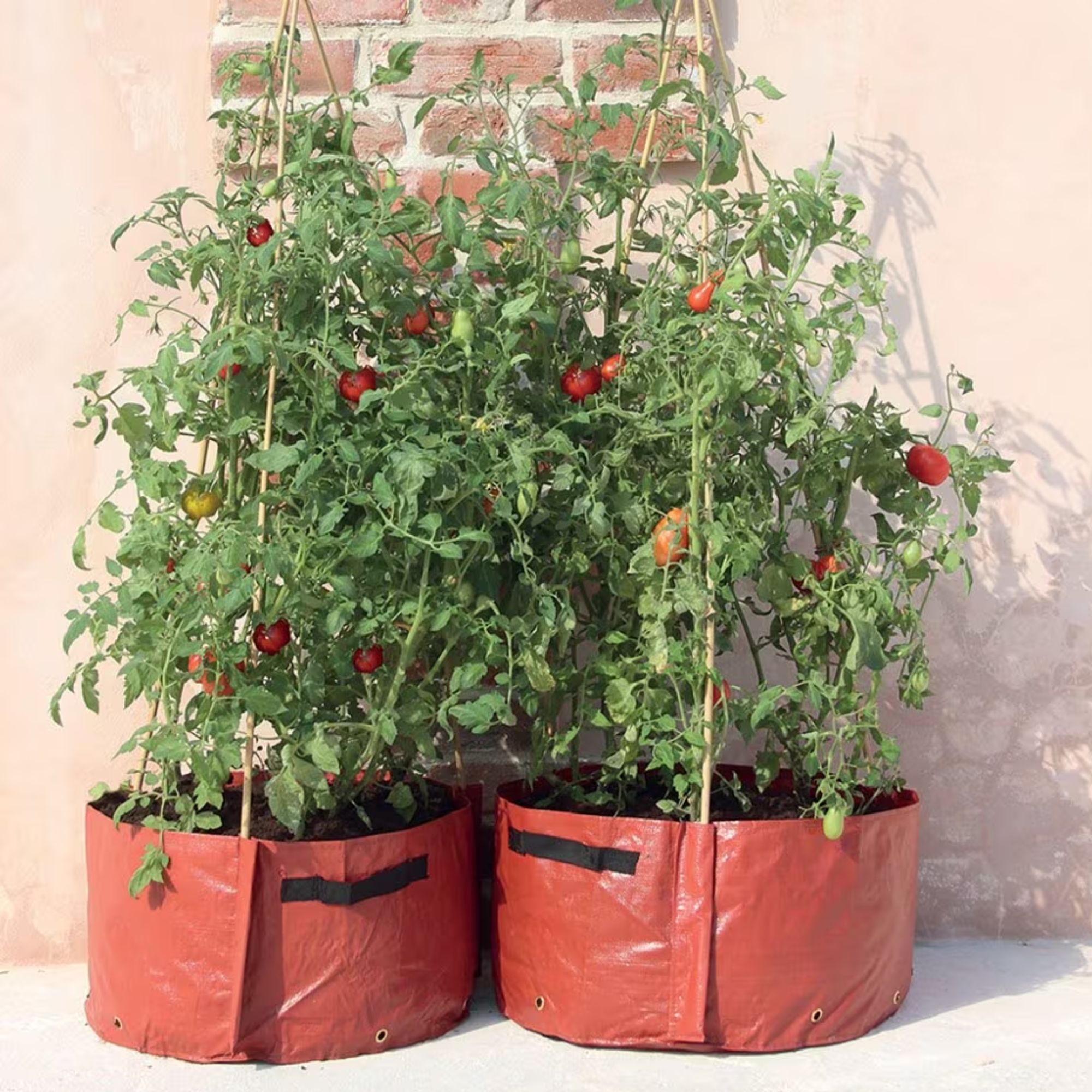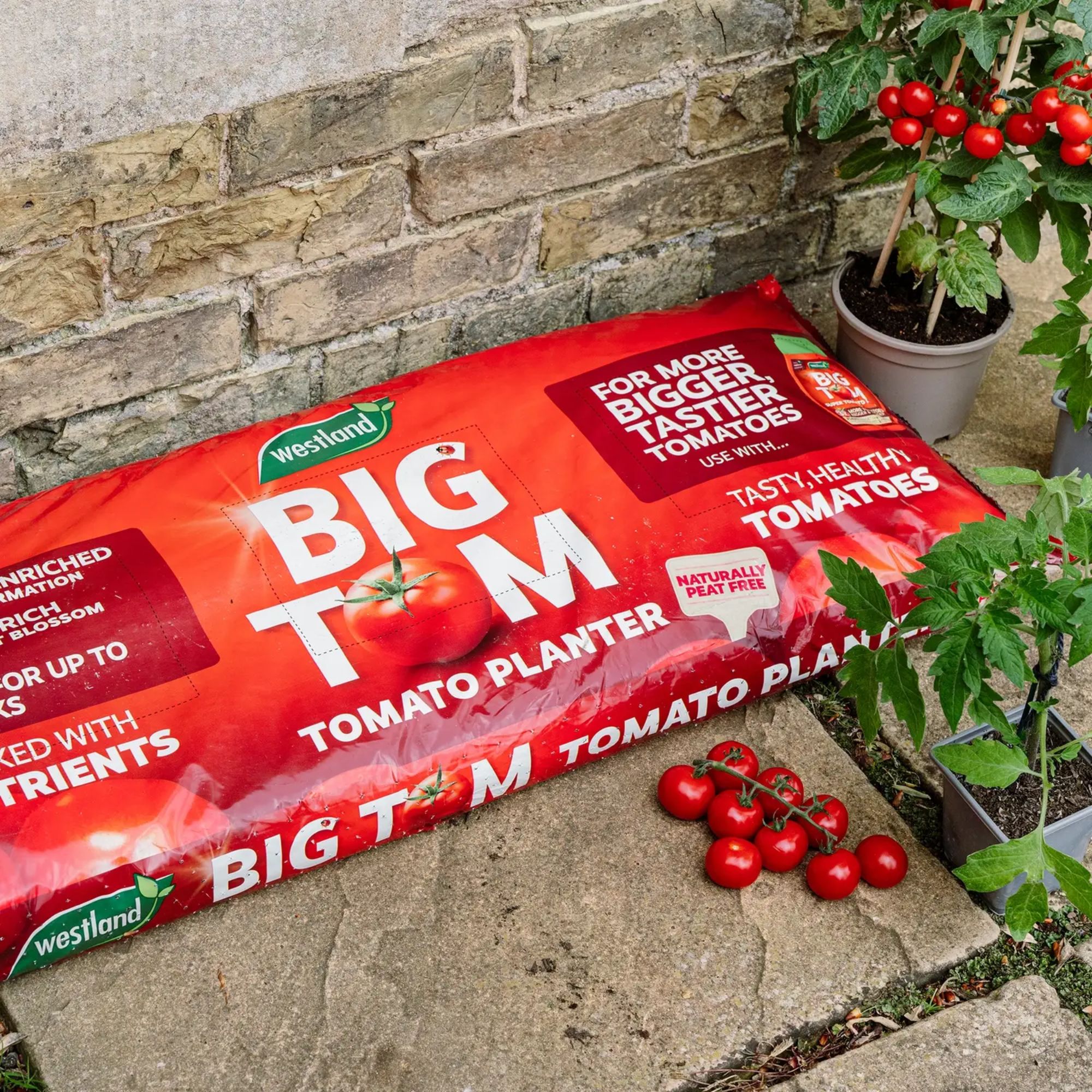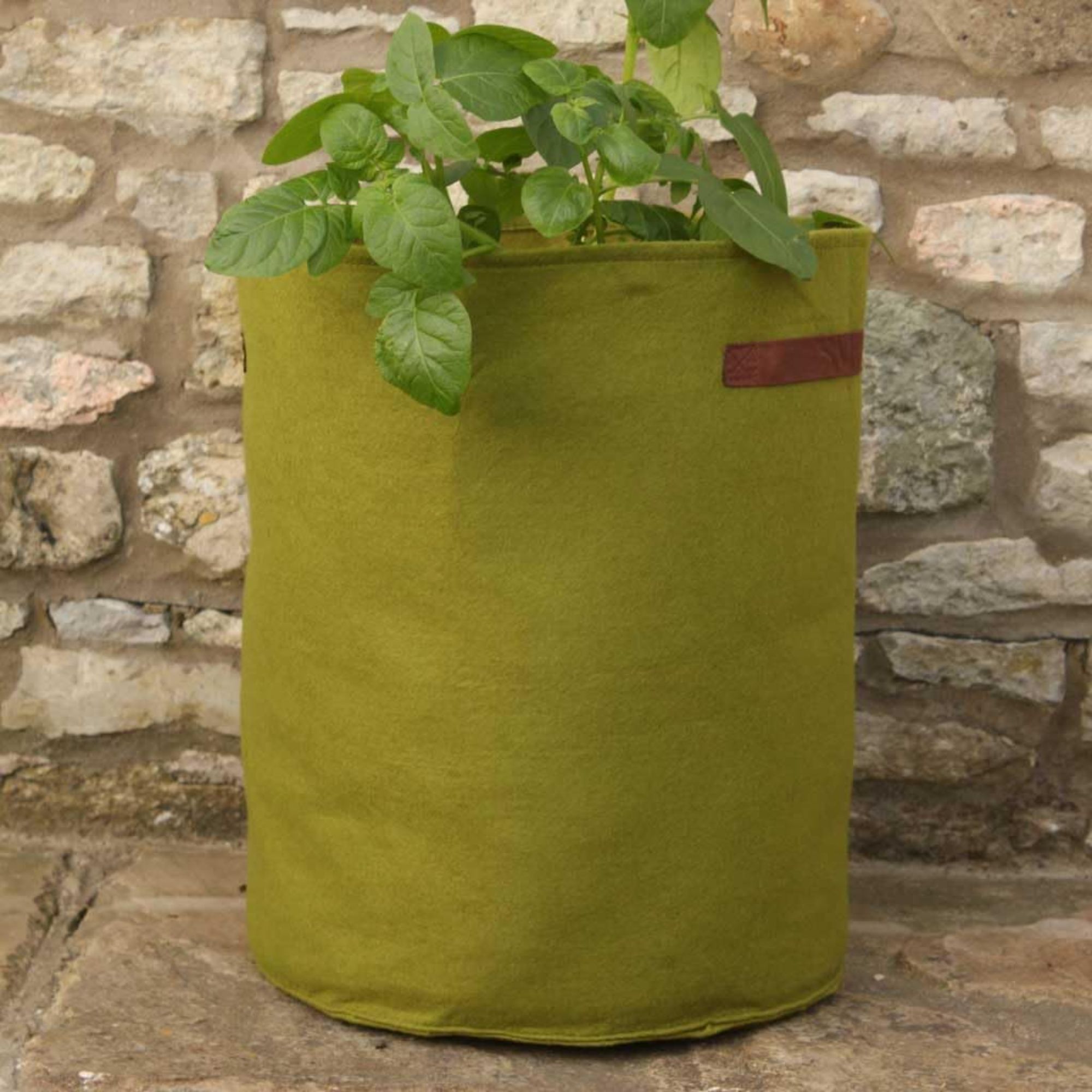Growing tomatoes in grow bags is easy, so long as you follow our expert guide
Short on soil space? It's time to start growing tomatoes in grow bags...


If you're ready to embrace the GYO movement with gusto, you can't go wrong growing tomatoes in grow bags – not least of all because it means you can enjoy a crop of red goodies no matter what size space you're working with!
Better still, it doesn't matter whether you already know how to grow tomatoes or not. In fact, as one of the easiest vegetables (fine, fruits) to grow, they're perfect for beginners and tomato aficionados alike – and yet, somehow, grow bags make the process even easier.
'It's all because there are many different types of grow bags available,' explains Morris Hankinson, director of Hopes Grove Nurseries.

Morris Hankinson is the founder and managing director of Hopes Grove Nurseries Ltd, the UK’s only specialist grower-retailer of hedging plants. He established the thriving business in 1992, shortly after graduating with a Commercial Horticulture Degree from Writtle College, Essex.
'Some are plastic with guided cutouts for planting tomatoes in, not to mention the perfectly balanced compost already in the bag.'
All of which means, yes, that your tomatoes won't need any extra feeding – at least until the summer. Sign us up, already!
Growing tomatoes in grow bags
'Growing tomatoes into grow bags makes growing tomatoes really easy and accessible, no matter how big or small your garden might be,' says Morris.
'Your tomato plants, either sown and grown by yourself or bought from a local garden centre, can be planted directly into the grow bag – or for additional benefits planted into a tomato grow ring which is placed into the bag first.'
Sign up to our newsletter for style inspiration, real homes, project and garden advice and shopping know-how
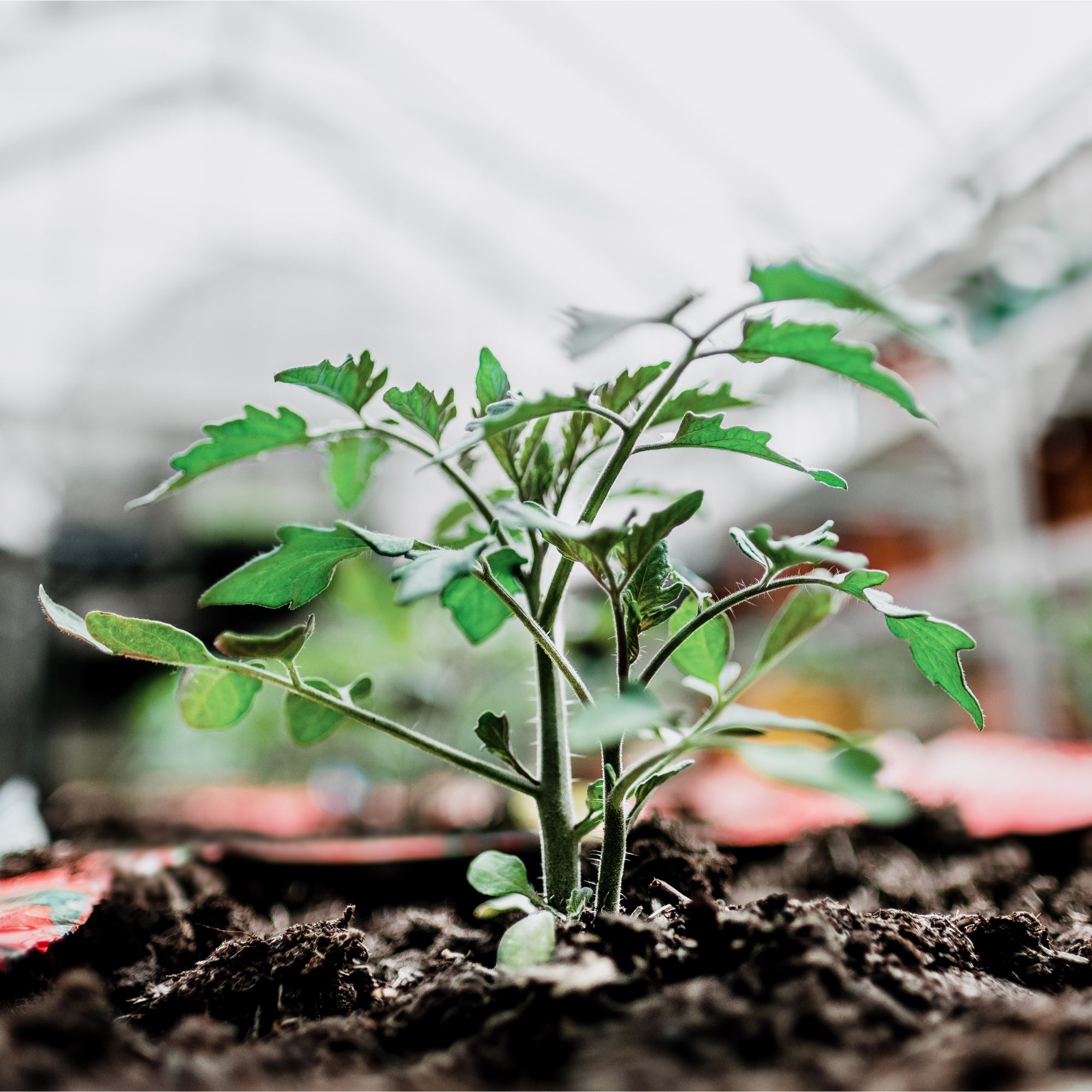
There are also fabric grow bags available, which you will need to fill with compost before you get planting your tomatoes in earnest (let alone practising your tomato tapping technique!).
Ready to get started? Simply flit your eyes downward for all the tips and expert know-how you need to get growing tomatoes in grow bags...
What you will need
There are two crucial ingredients when it comes to nailing this GYO trend: tomatoes and grow bags.
'Aim to select a grow bag with at least 25cm depth, providing ample space for robust root development,' says Craig Wilson, co-founder, director and in-house gardening expert at Gardeners Dream.

Craig Wilson, co-founder and director of Gardener's Dream Ltd has established himself as a key figure in the online gardening industry. With over two decades of plant knowledge and gardening experience, he takes pride in sharing his top tips and tricks for the garden.
'Fabric grow bags are ideal as they promote excellent air circulation and drainage, reducing the risk of root rot and other water-related issues,' he adds.
'The breathability of the fabric also helps regulate soil temperature, contributing to healthier plant growth.'
With this in mind, then, we recommend purchasing one of the following options:
The Levington Tomorite Fruit & Vegetable Grow Bag from B&Q is also popular among those on a mission to make their edimental dreams a reality.
Once you've got your grow bag sorted, it's time to source your tomato seeds (or plug plants, depending on your preference).
'When selecting tomato varieties for grow bags, focus on bush (determinate) or smaller vine (indeterminate) types that are more suited to confined spaces,' advises Craig.
'Consider the growing environment (greenhouse or outdoor) and your personal taste preferences. Early-maturing varieties can be beneficial in the UK's variable climate, providing a longer harvesting window and greater yield.'
He advises, then, that you opt for one of the following varieties:
Popular bush tomato varieties
- 'Roma' tomato seeds from Amazon: this tomato is known for its plum-shaped fruits, making it ideal for sauces and canning.
- 'Tumbling Tom' tomato seeds from Thompson & Morgan: a cherry tomato variety that's perfect for hanging baskets and containers due to its trailing habit.
- 'Bush Early Girl' tomato seeds from Amazon: a cherry tomato variety that's perfect for hanging baskets and containers due to its trailing habit.
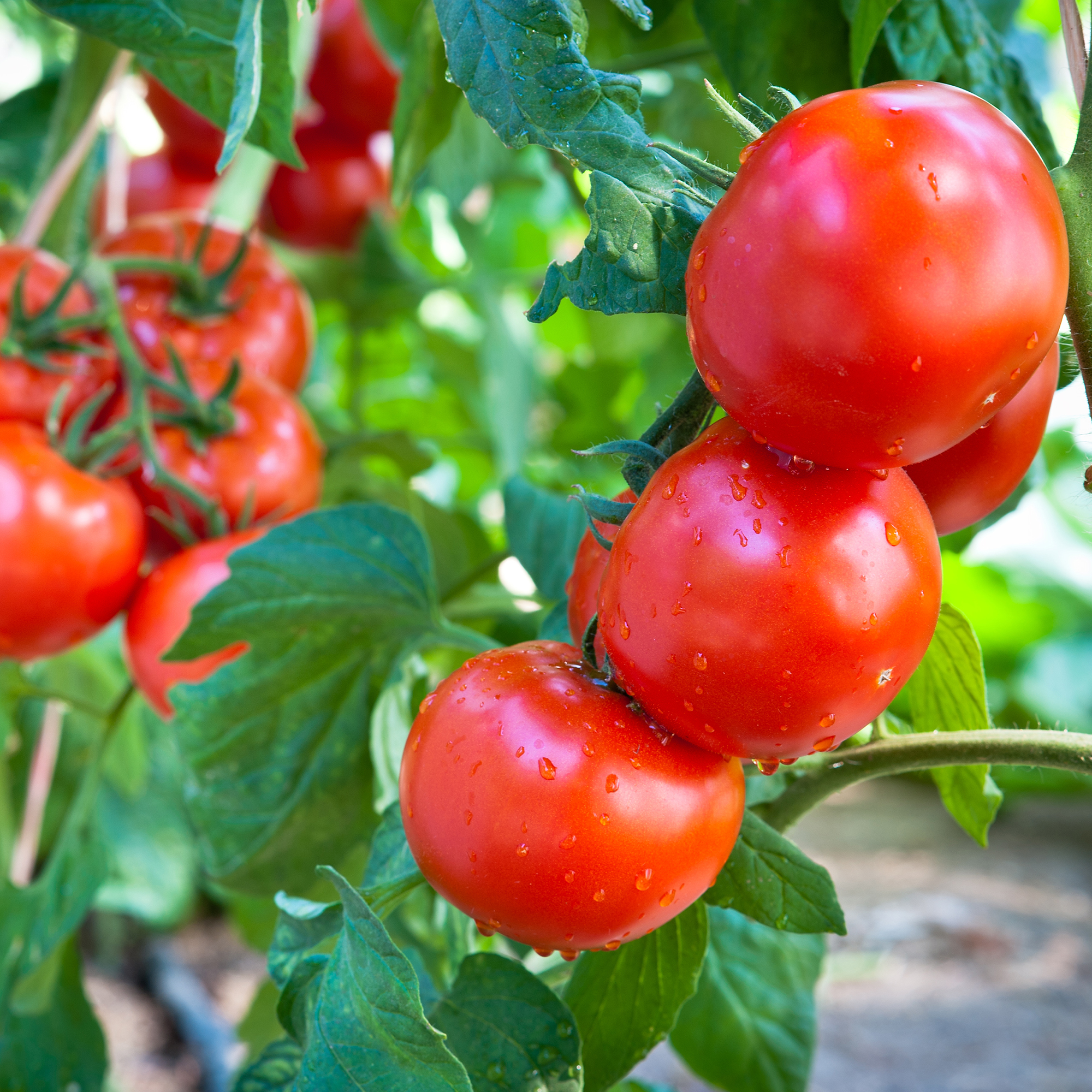
Popular smaller vine tomato varieties
- 'Gardener's Delight' tomato seeds from Crocus: a cherry tomato known for its sweet flavour, suitable for salads and snacking.
- 'Moneymaker' tomato seeds from Thompson & Morgan: a traditional variety that produces a reliable crop of medium-sized fruits.
- 'Sweet Million' tomato seeds from Etsy: produces large clusters of small, sweet cherry tomatoes, very prolific.
- 'Sungold' tomato seeds from B&Q: a cherry type with golden-orange fruits, known for its exceptional sweetness.
Step-by-step guide
Now that you have your tomatoes and your grow bag sussed, it's time to figure out how to put the two together for some GYO magic.
1. Prepare the grow bag
When growing tomatoes in grow bags, preparation is the key to success.
'Fill your grow bag with a high-quality potting mix, enriched with organic compost to nourish the plants,' says Craig.
'Mix in a slow-release tomato fertiliser to ensure a steady supply of essential nutrients. Position the bag in a sunny spot, guaranteeing at least 6-8 hours of direct sunlight each day, which is critical for fruit development and overall plant health.'
2. Plant your tomatoes
You'll need to start your tomato seeds off in pots and nurture them into thriving seedlings before you get planting (don't worry: it's incredibly simple to learn how to sow seeds successfully).
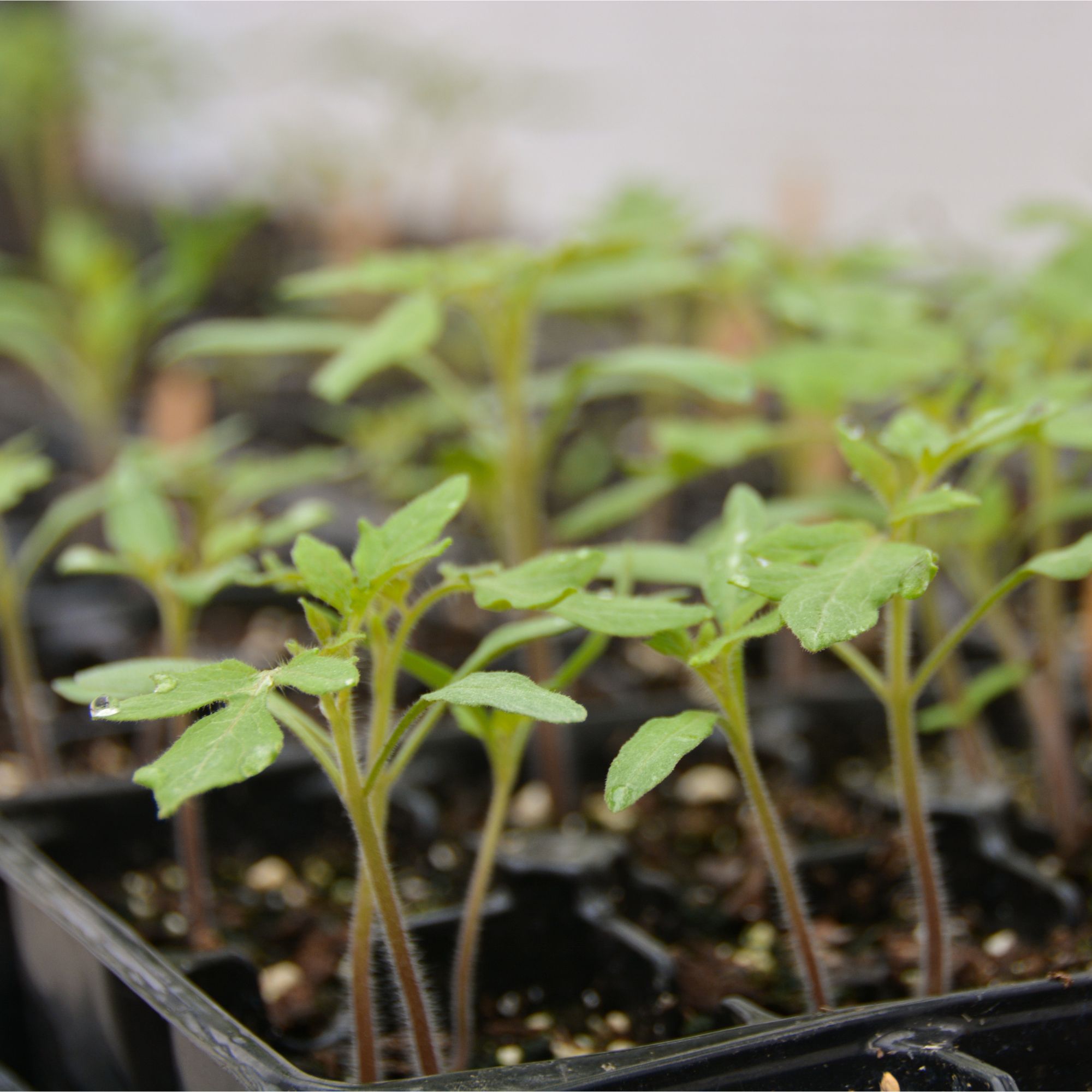
Once that's done, you'll want to 'plant seedlings deeply within the grow bag, burying them up to their first true leaves to encourage a strong, extensive root system,' says Craig.
'This deeper planting method helps stabilise the plant and promotes the formation of additional roots along the buried stem, enhancing water and nutrient uptake. Ensure there is enough space between plants for air to circulate freely, reducing the risk of disease.'
Morris adds that, if you are growing in a grow bag with a tomato ring, take care to 'place that into the compost before you plant your tomato plants'.
3. Water and feed them well
If you're growing tomatoes in grow bags, you'll need to set up a regular watering schedule, 'as the confined space and fabric material can lead to quicker drying,' says Craig.
'Check the soil moisture daily, watering thoroughly as needed to avoid water stress.'
If you aren't using a grow bag with compost and fertiliser built into it, be sure, too, to give your tomatoes a fortnightly dose of potassium-rich liquid tomato fertiliser.
'When flowers begin to grow provide the plants with some tomato feeds weekly to ensure a good harvest,' says Morris.
4. Show them some support

If you're growing tomatoes in grow bags, you'll need to support the plants as they grow with stakes, cages, or bamboo canes.
'This will help to prevent wind damage and keep fruit off the ground, reducing the risk of pest attacks and diseases,' says Craig.
5. And don't forget to harvest them
The very best part of growing tomatoes in grow bags is, of course, eating the literal fruits of your labour!
'Take care to harvest tomatoes once they've reached full colour (no green tomatoes, please) and yield slightly to gentle pressure, indicating ripeness,' says Craig.
'Regular picking not only rewards you with a continuous supply of fresh tomatoes but also stimulates the plant to produce more fruit, extending the harvesting period.'
FAQs
Do tomatoes grow well in grow bags?
Tomatoes grow exceptionally well in grow bags, largely because you can tailor soil conditions to suit them perfectly.
'Tomatoes will need support, such as bamboo canes, so place that into the grow bag before the plants to minimise root damage,' advises Morris, who notes that, much like growing tomatoes in pots, your plants 'will need a sunny, sheltered site and regular watering'.
Just be sure to cut some holes in the bottom of the grow bag before planting to help improve drainage.
How often should you water tomatoes in grow bags?
As with all container plants, you'll find that your tomato plants tend to dry out quicker in grow bags.
'Check the soil moisture daily, watering thoroughly as needed to avoid water stress,' advises Craig, adding that little and often is key.
How do you care for tomatoes in grow bags?
When growing tomatoes in grow bags, be sure to 'watch for signs of pests and diseases, adopting organic control methods, such as applying neem oil to tackle aphid infestations,' says Craig.
'Good airflow around plants is vital for preventing fungal diseases; thus, spacing and pruning are key. Employing crop rotation in your garden can also help in breaking the life cycles of soil-borne pathogens, contributing to a healthier garden ecosystem.'
Is anyone else incredibly excited to start growing tomatoes in grow bags? We're already counting down the days until our seedlings are groaning under the weight of a bushel of bright red tomatoes...

Kayleigh Dray became Ideal Home’s Acting Content Editor in the spring of 2023, and is very excited to get to work. She joins the team after a decade-long career working as a journalist and editor across a number of leading lifestyle brands, both in-house and as a freelancer.
